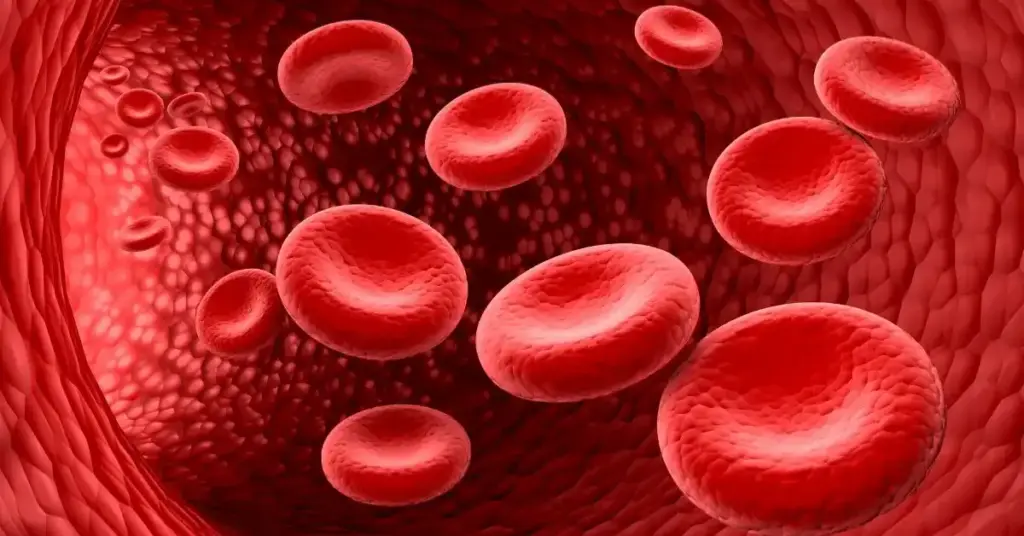
The knee is the body’s largest and most intricate joint, playing a vital role in movement, stability, and everyday functions such as walking, climbing stairs, and sitting. Structurally, it acts as a hinge between the thigh bone (femur), shinbone (tibia), and kneecap (patella). Due to its weight-bearing function and constant movement, it is especially prone to injury, degeneration, and chronic pain.
Knee conditions range from sports-related injuries to age-related osteoarthritis. If left unaddressed, these conditions can significantly compromise mobility, reduce independence, and diminish overall quality of life. Advanced diagnostic tools, surgical innovation, and personalized rehabilitation protocols now allow for better treatment outcomes than ever before. The knee’s function can often be restored fully through a combination of medical and physical therapy strategies, even in complex cases.
The knee joint is a synovial hinge joint that enables flexion, extension, and slight rotational movement. It joins three major bones—the femur (thigh bone), tibia (shin bone), and patella (kneecap). The cartilage lining the joint acts as a cushion, enabling smooth, frictionless movement.
Supporting structures of the knee include:
The knee also relies heavily on surrounding muscles—particularly the quadriceps and hamstrings—to provide additional strength and control. Disruption to any one component, whether by trauma, overuse, or degeneration, can result in instability and pain. Understanding this intricate anatomy is key to diagnosing knee conditions accurately and planning effective interventions.
Knee injuries are common across all age groups and often occur during sports, accidents, or due to improper biomechanics. The most frequently affected structures include ligaments and cartilage, which provide the joint with stability and shock absorption.
Typical injuries include:
Symptoms may include:
Prompt evaluation through clinical examination and MRI helps assess the extent of damage. While mild injuries respond well to rest and physical therapy, severe cases may require surgical reconstruction, especially in athletes or active individuals. Early treatment prevents long-term complications like chronic instability and early-onset arthritis.
Osteoarthritis is a degenerative condition where the cartilage that cushions the knee wears down over time, leading to bone-on-bone contact, inflammation, and chronic pain. It is one of the most common causes of knee disability in older adults.
Key features of knee osteoarthritis:
Risk factors include:
Treatment options vary depending on severity:
Left untreated, degeneration can limit independence and disrupt daily life. A multidisciplinary approach—combining orthopedic care, physiotherapy, and lifestyle changes—is essential to maintaining joint function and slowing disease progression.
Knee replacement surgery is a highly effective solution for advanced arthritis or severe knee damage when conservative treatments fail. The procedure involves removing damaged cartilage and bone from the joint and replacing them with prosthetic components made of metal and high-grade plastic.
Types of knee replacement procedures:
Candidates for surgery typically experience:
Benefits include:
Surgical advancements such as computer-assisted navigation and minimally invasive techniques have improved precision and reduced recovery time. Knee replacement surgery requires detailed pre-operative planning and a strong rehabilitation commitment post-surgery for optimal success. It's a transformative option for patients suffering from chronic, disabling knee pain.
Rehabilitation is critical to successful knee treatment, whether post-injury or post-surgery. Physical therapy aims to restore strength, range of motion, and functional independence, helping patients return to normal activities safely and confidently.
Key goals of knee rehabilitation:
Common therapy techniques include:
Duration of rehab varies by condition. A mild ligament strain may recover within weeks, whereas knee replacement patients typically undergo structured rehabilitation for 3–6 months. Compliance with a therapist-guided regimen and consistent home exercises are key to long-term success. Ignoring rehabilitation can lead to stiffness, muscle atrophy, and impaired joint function. Whether recovering from injury or surgery, physical therapy is a vital step toward regaining full use of the knee.
Minimally invasive procedures have revolutionized knee care by reducing recovery time, minimizing tissue damage, and improving surgical precision. These techniques are especially beneficial for patients who require intervention but wish to avoid the risks and downtime associated with traditional open surgery.
Common minimally invasive knee procedures include:
Advantages of minimally invasive techniques:
Ideal candidates are individuals with isolated damage or early-stage arthritis. Preoperative imaging and detailed evaluation help determine suitability. These procedures reflect a shift toward precision medicine—offering high-quality care with less disruption to the patient’s life.
The knee plays a vital role in mobility, and preserving its function is essential for long-term well-being. Whether addressing trauma, degeneration, or chronic discomfort, modern knee care combines anatomical insight, advanced imaging, surgical precision, and comprehensive rehabilitation to restore and protect joint health. From managing minor injuries to performing life-changing knee replacements, each step is backed by science, technology, and a personalized approach.
At Kannappa Memorial Hospital, our orthopedic team is dedicated to offering state-of-the-art diagnostics, treatment plans tailored to individual needs, and outcomes rooted in long-term mobility and comfort. Whether the goal is pain relief, improved mobility, or returning to active living, the right care at the right time can make all the difference.
The knee is the body’s largest and most intricate joint, playing a vital role in movement, stability, and everyday functions such as walking, climbing stairs, and sitting. Structurally, it acts as a hinge between the thigh bone (femur), shinbone (tibia), and kneecap (patella). Due to its weight-bearing function and constant movement, it is especially prone to injury, degeneration, and chronic pain.
Knee conditions range from sports-related injuries to age-related osteoarthritis. If left unaddressed, these conditions can significantly compromise mobility, reduce independence, and diminish overall quality of life. Advanced diagnostic tools, surgical innovation, and personalized rehabilitation protocols now allow for better treatment outcomes than ever before. The knee’s function can often be restored fully through a combination of medical and physical therapy strategies, even in complex cases.
Anatomy of the Knee Joint
Common Knee Injuries (ACL, Meniscus, Ligaments)
Knee Osteoarthritis & Degeneration
Knee Replacement Surgery
Rehabilitation & Physical Therapy for Knee
Minimally Invasive Knee Procedures
Conclusion
The knee joint is a synovial hinge joint that enables flexion, extension, and slight rotational movement. It joins three major bones—the femur (thigh bone), tibia (shin bone), and patella (kneecap). The cartilage lining the joint acts as a cushion, enabling smooth, frictionless movement.
Supporting structures of the knee include:
The knee also relies heavily on surrounding muscles—particularly the quadriceps and hamstrings—to provide additional strength and control. Disruption to any one component, whether by trauma, overuse, or degeneration, can result in instability and pain. Understanding this intricate anatomy is key to diagnosing knee conditions accurately and planning effective interventions.
Knee injuries are common across all age groups and often occur during sports, accidents, or due to improper biomechanics. The most frequently affected structures include ligaments and cartilage, which provide the joint with stability and shock absorption.
Typical injuries include:
Symptoms may include:
Prompt evaluation through clinical examination and MRI helps assess the extent of damage. While mild injuries respond well to rest and physical therapy, severe cases may require surgical reconstruction, especially in athletes or active individuals. Early treatment prevents long-term complications like chronic instability and early-onset arthritis.
Osteoarthritis is a degenerative condition where the cartilage that cushions the knee wears down over time, leading to bone-on-bone contact, inflammation, and chronic pain. It is one of the most common causes of knee disability in older adults.
Key features of knee osteoarthritis:
Risk factors include:
Treatment options vary depending on severity:
Left untreated, degeneration can limit independence and disrupt daily life. A multidisciplinary approach—combining orthopedic care, physiotherapy, and lifestyle changes—is essential to maintaining joint function and slowing disease progression.
Knee replacement surgery is a highly effective solution for advanced arthritis or severe knee damage when conservative treatments fail. The procedure involves removing damaged cartilage and bone from the joint and replacing them with prosthetic components made of metal and high-grade plastic.
Types of knee replacement procedures:
Candidates for surgery typically experience:
Benefits include:
Surgical advancements such as computer-assisted navigation and minimally invasive techniques have improved precision and reduced recovery time. Knee replacement surgery requires detailed pre-operative planning and a strong rehabilitation commitment post-surgery for optimal success. It’s a transformative option for patients suffering from chronic, disabling knee pain.
Rehabilitation is critical to successful knee treatment, whether post-injury or post-surgery. Physical therapy aims to restore strength, range of motion, and functional independence, helping patients return to normal activities safely and confidently.
Key goals of knee rehabilitation:
Common therapy techniques include:
Duration of rehab varies by condition. A mild ligament strain may recover within weeks, whereas knee replacement patients typically undergo structured rehabilitation for 3–6 months. Compliance with a therapist-guided regimen and consistent home exercises are key to long-term success. Ignoring rehabilitation can lead to stiffness, muscle atrophy, and impaired joint function. Whether recovering from injury or surgery, physical therapy is a vital step toward regaining full use of the knee.
Minimally invasive procedures have revolutionized knee care by reducing recovery time, minimizing tissue damage, and improving surgical precision. These techniques are especially beneficial for patients who require intervention but wish to avoid the risks and downtime associated with traditional open surgery.
Common minimally invasive knee procedures include:
Advantages of minimally invasive techniques:
Ideal candidates are individuals with isolated damage or early-stage arthritis. Preoperative imaging and detailed evaluation help determine suitability. These procedures reflect a shift toward precision medicine—offering high-quality care with less disruption to the patient’s life.
The knee plays a vital role in mobility, and preserving its function is essential for long-term well-being. Whether addressing trauma, degeneration, or chronic discomfort, modern knee care combines anatomical insight, advanced imaging, surgical precision, and comprehensive rehabilitation to restore and protect joint health. From managing minor injuries to performing life-changing knee replacements, each step is backed by science, technology, and a personalized approach.
At Kannappa Memorial Hospital, our orthopedic team is dedicated to offering state-of-the-art diagnostics, treatment plans tailored to individual needs, and outcomes rooted in long-term mobility and comfort. Whether the goal is pain relief, improved mobility, or returning to active living, the right care at the right time can make all the difference.
Knee pain can be caused by several factors such as injury, overuse, arthritis, poor posture, or ligament tears. Conditions like meniscal damage or patellar misalignment also contribute. It may be triggered by physical activity or even worsen at rest. Identifying the underlying cause with medical evaluation is crucial for deciding the appropriate treatment—ranging from medication and therapy to surgery if required.
Knee pain relief depends on the cause but often starts with conservative treatments. Ice therapy, rest, and over-the-counter medications may ease mild discomfort. Physical therapy improves strength and flexibility, which helps reduce strain. In some cases, injections or braces provide relief. Persistent or worsening pain may require surgical evaluation. A personalized care plan ensures long-term relief and prevention of further damage.
Knee pain at night may occur due to conditions like osteoarthritis, bursitis, or inflammation of tendons. Reduced movement during sleep can increase stiffness and worsen discomfort. In some cases, fluid buildup or joint instability causes night-time aches. Proper pillow support, heat therapy, and stretching before bed can help. If it persists, medical evaluation is necessary to identify and address the root cause.





